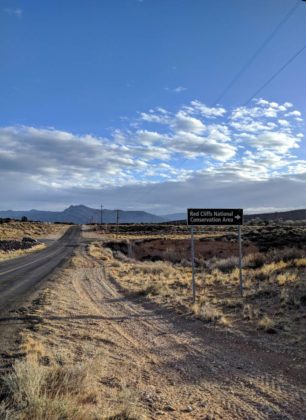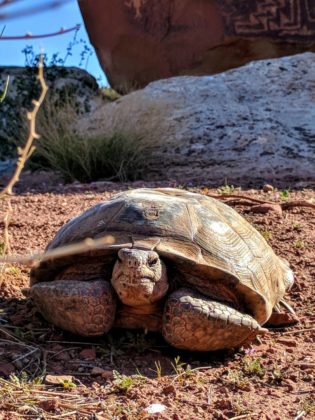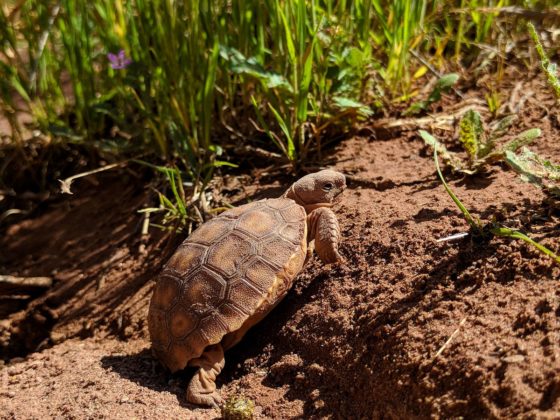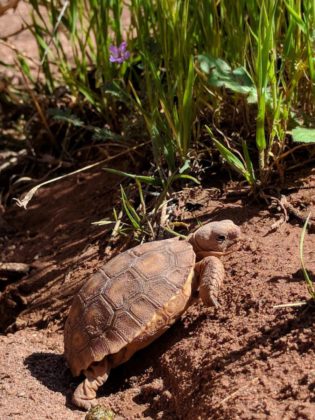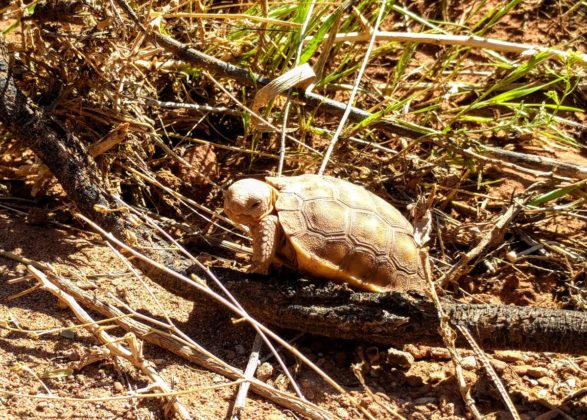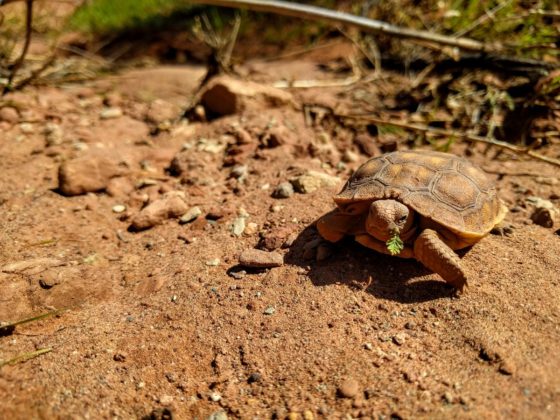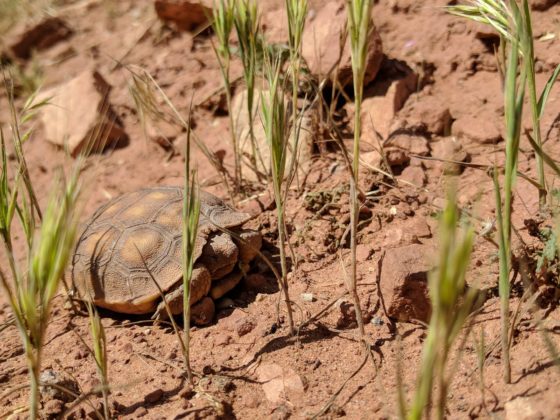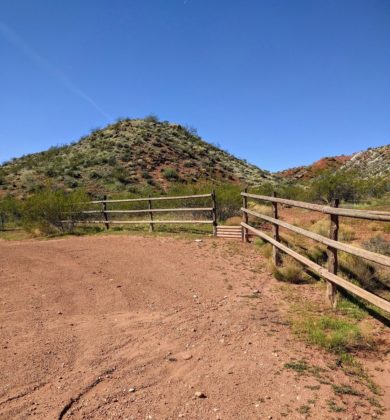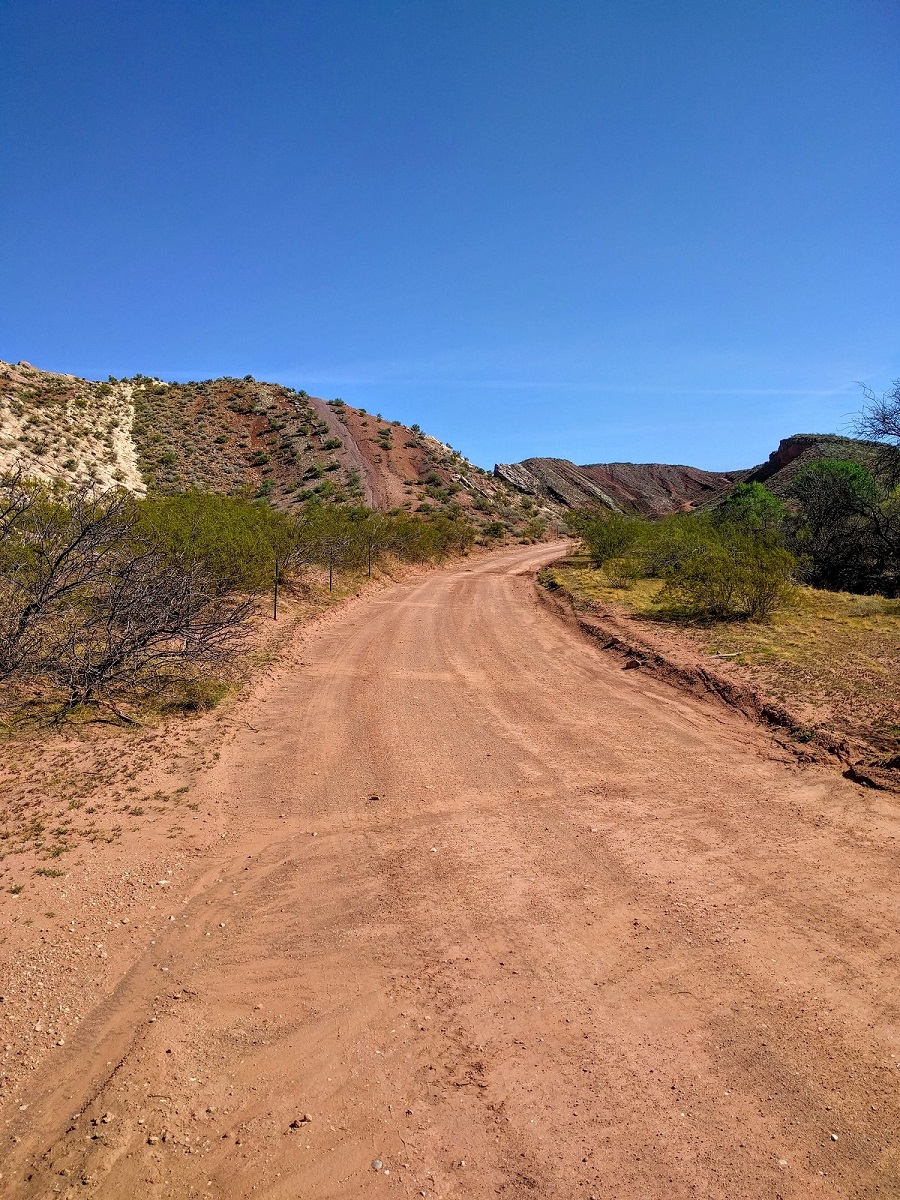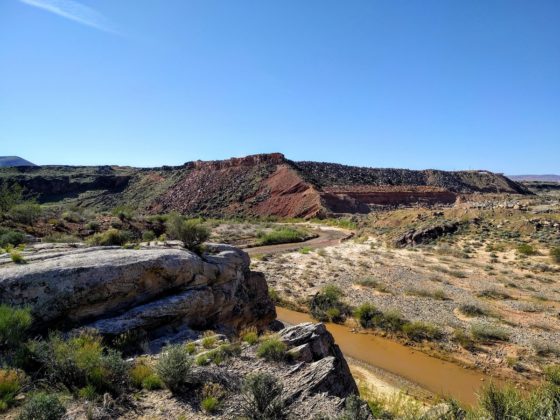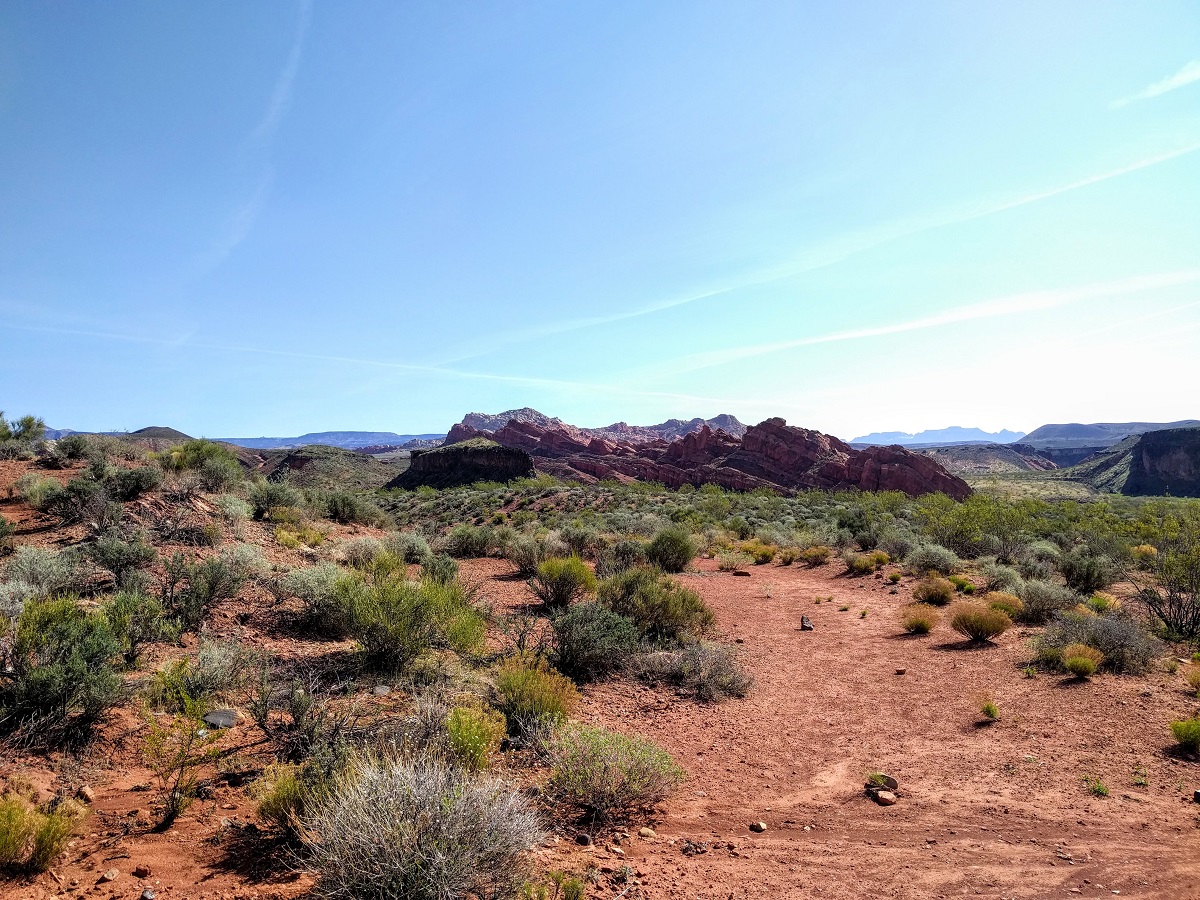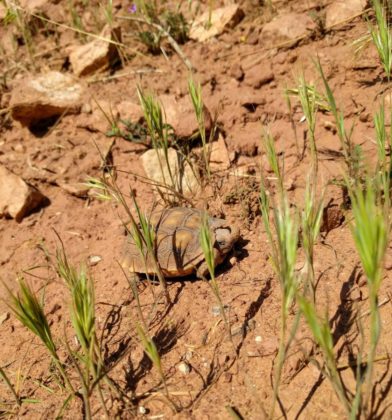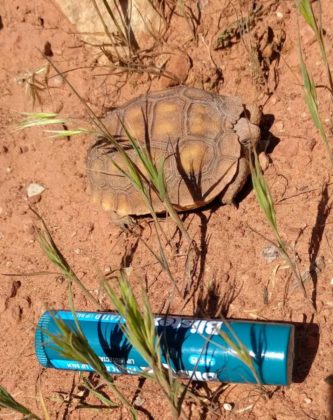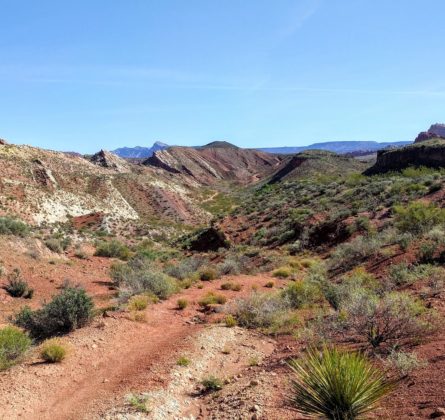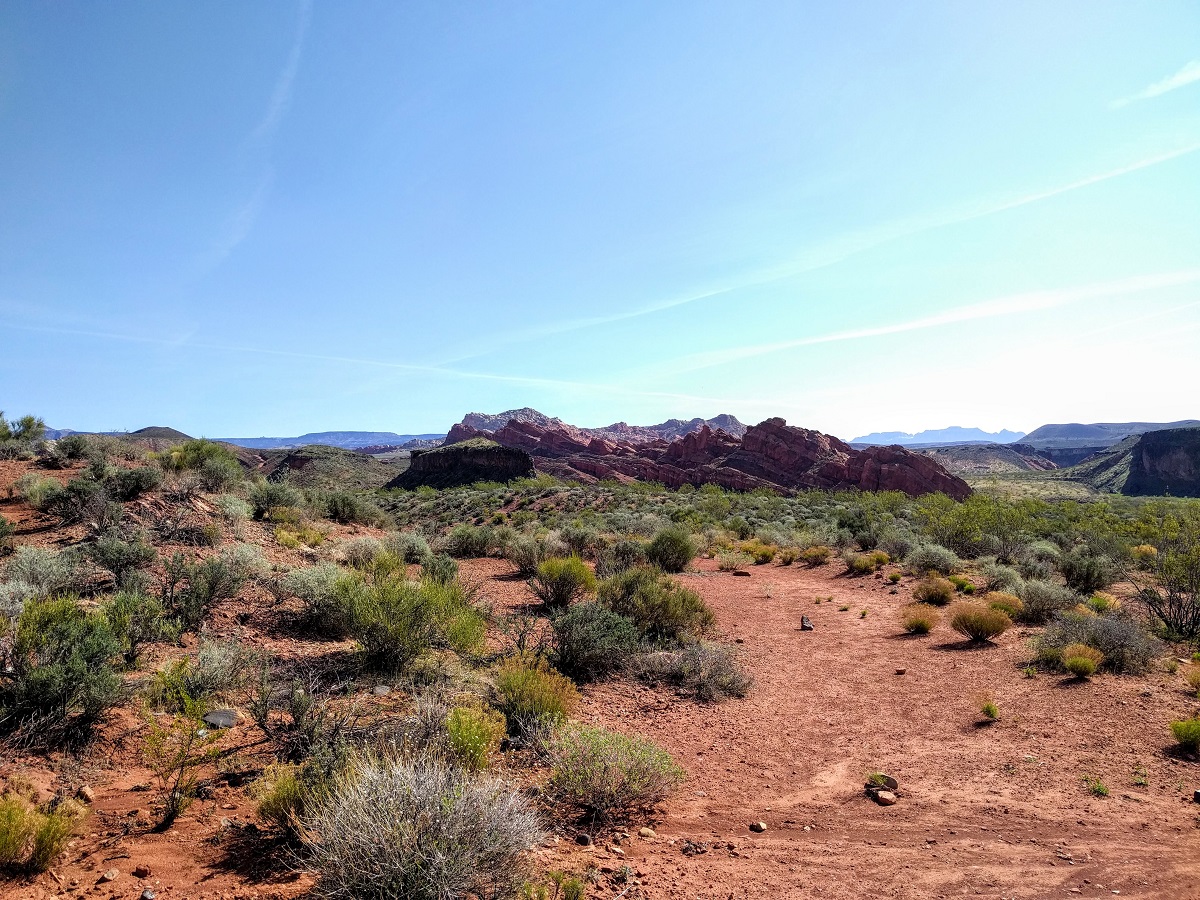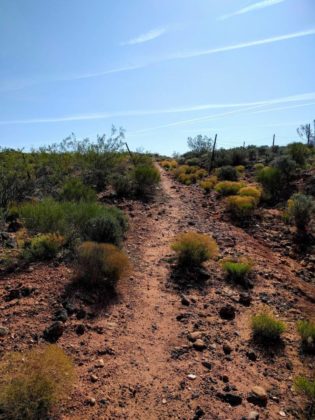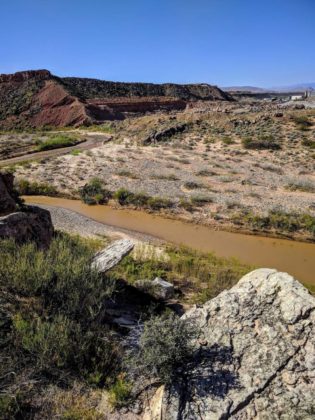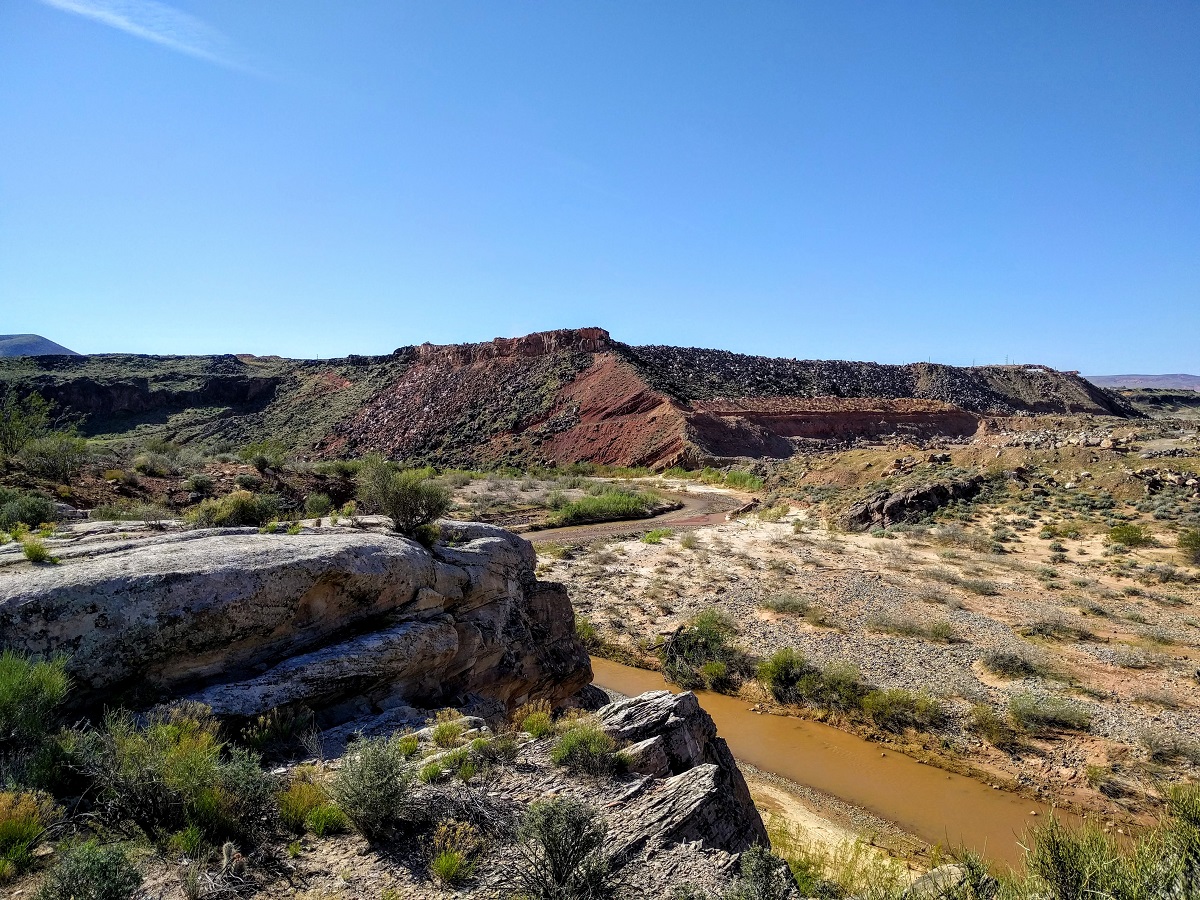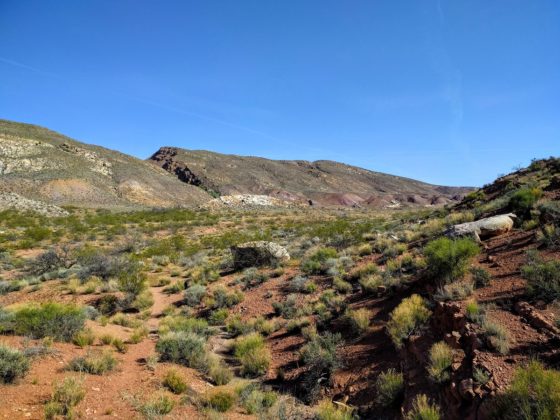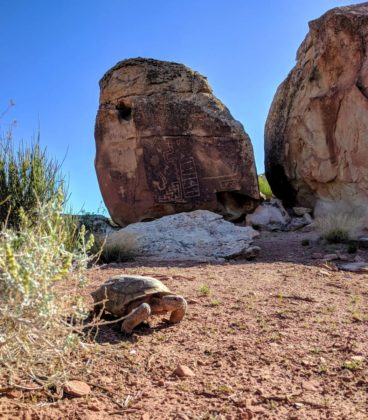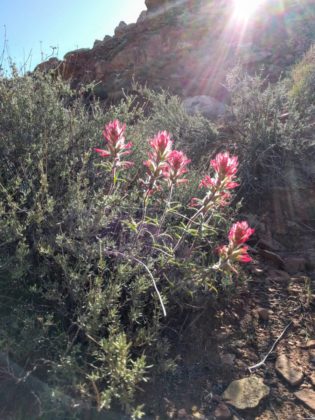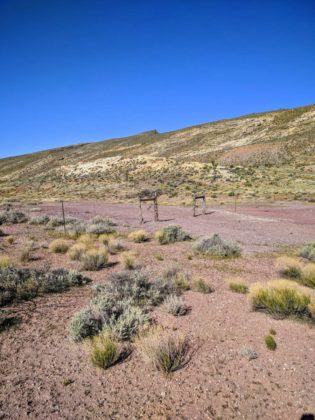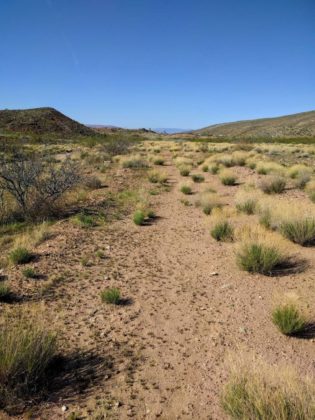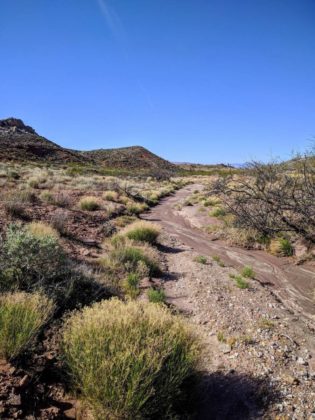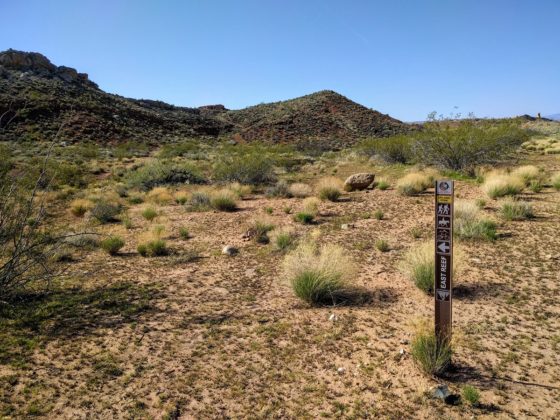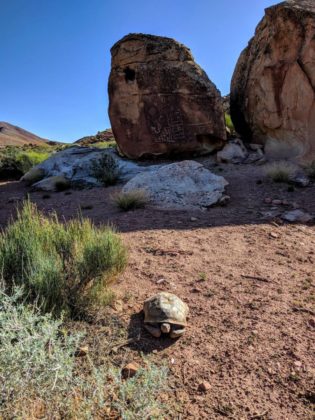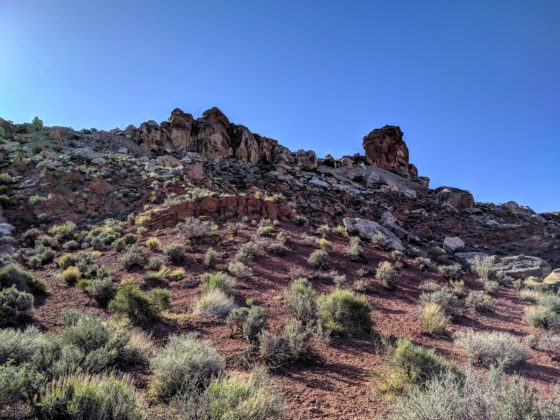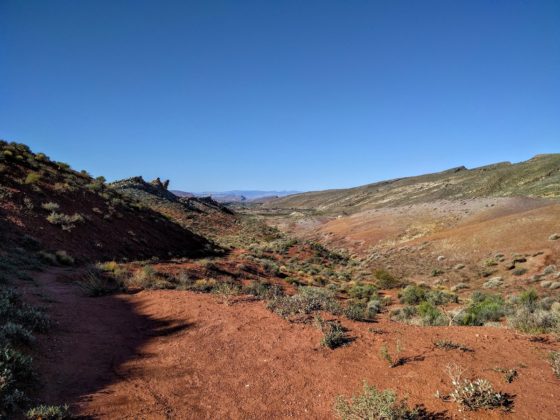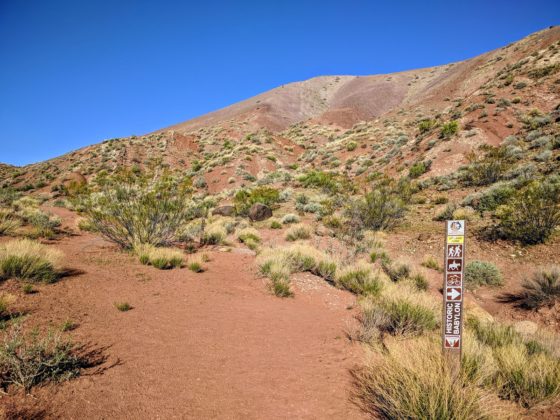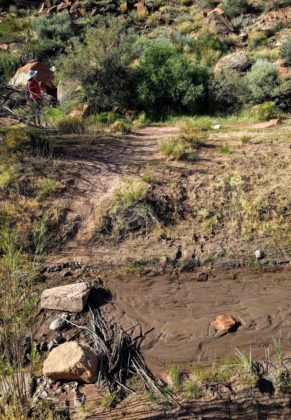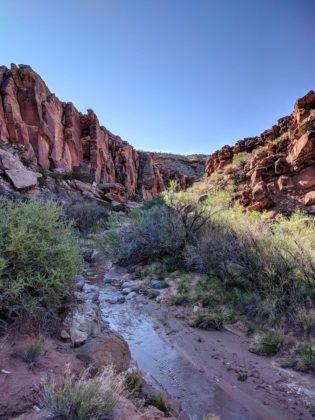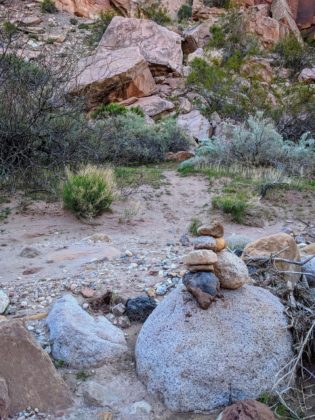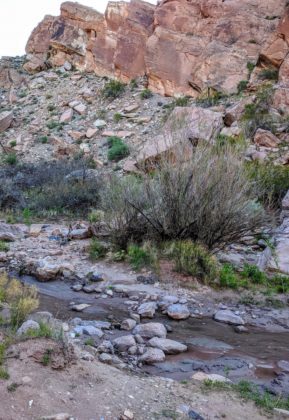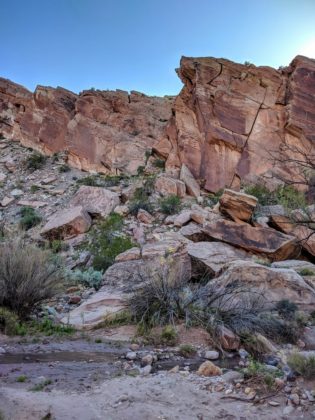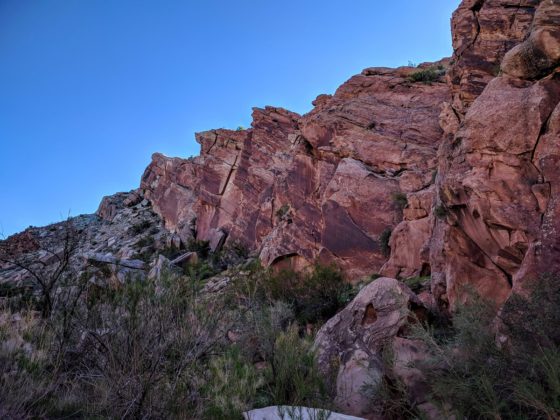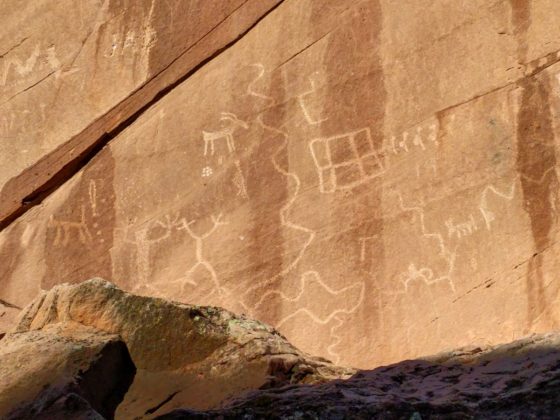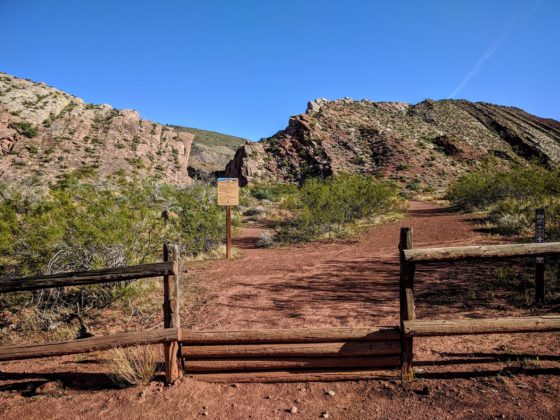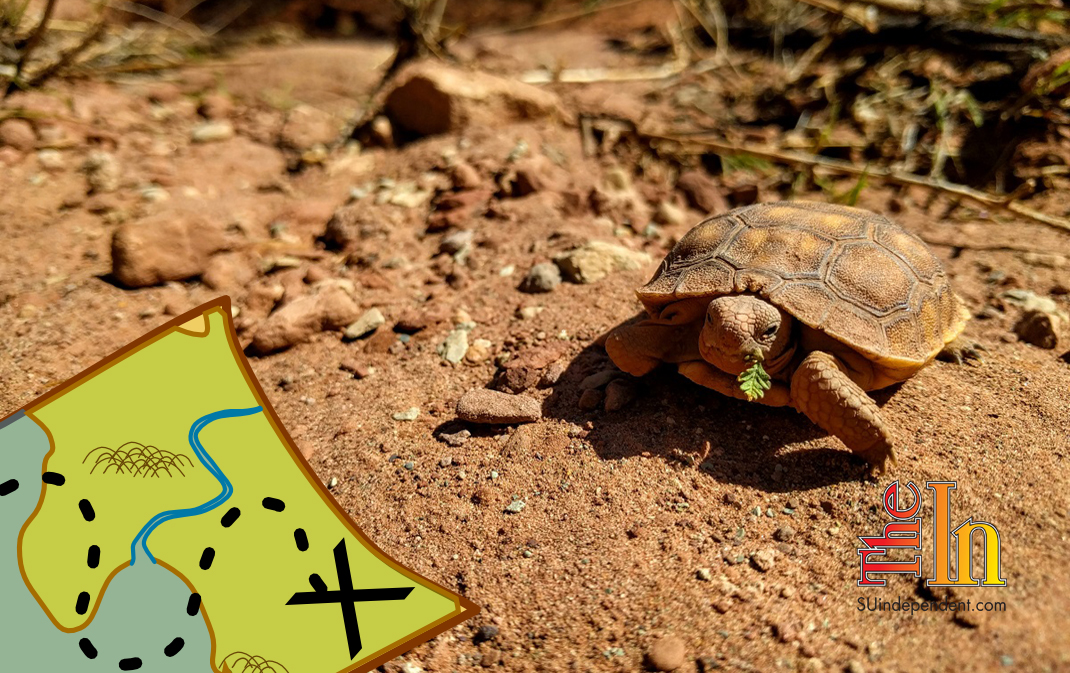
Hiking Southern Utah: East Reef
By Lacey McIntyre
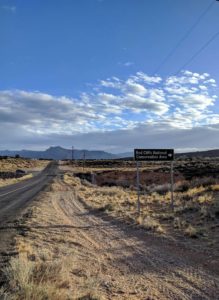
Distance: Approximately 2.5-mile loop from the historic Babylon trailhead to the East Reef Trail to Babylon Road
Family-Friendly: Yes
Dog-Friendly: Yes, on a leash
Directions from St. George: Take Interstate 15 North to exit 22, which is the Leeds exit. Turn left (north) off the interstate and drive approximately 2 miles through the town of Leeds. To your right, you will see a sign that says “Red Cliffs National Conservation Area.”
Turn right on the paved road (900 North, aka Babylon Road), which will soon turn into a dirt road. About a mile into the drive, the road will get sandy and potentially tough for smaller vehicles to maneuver. Occasionally, larger rocks may be in the road as well. It is strongly suggested to have high clearance and/or 4-wheel drive, but it is not always necessary. Use your best judgment, and don’t continue on the road if you have doubts.
Approximately 3.7 miles from the turn-off, you will reach the historic Babylon trailhead on your right.
I began this hike on a gorgeous April morning. I parked at the historic Babylon trailhead and took the step over for the historic Babylon Trail toward the obvious passage between the rocks. The first crossing of the stream was pretty easy, with rocks lining the way. During this trip, the stream was really nothing more than an inch or so of water, but be prepared to either get your feet wet or cross via the rocks in three different places. As I made my way through the opening between the rocks, I saw the petroglyphs up to the left. This loop has a couple of spots right along the trails to marvel at the beautiful markings left by local tribes of the past. Please respect these beautiful treasures and view them from a distance.
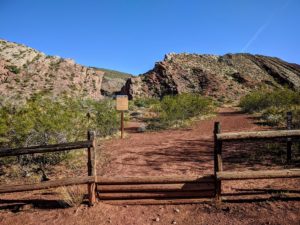
At the second crossing, I could see a set of cairns denoting where the trail led across the stream. The third crossing was a bit trickier. If you find yourself heading off into tall Coyote Willow like I did, turn around and see if you can find a couple large rocks in the stream to cross.
Cross the stream and follow the trail to its intersection with the East Reef Trail. The area is not well marked, so there were quite a few times when I had to stop and look around to find the trail. After about a quarter of a mile, I came across the junction of historic Babylon (continuing to the right) and East Reef (to the left).
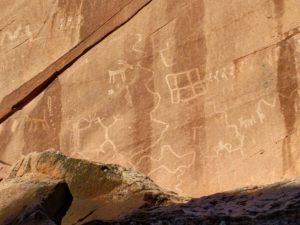
Following the East Reef Trail to the left will lead you around the back of the hills you can see from Babylon Road. About a half mile into this section of trail, there is a beautiful petroglyph rock. Posing right in front of the rock was a large Mojave desert tortoise that was probably well over 60 years old.
Beyond the rock, I lost the trail but did end up finding an opening in an old fence. Go through the fence and you will make your way up toward the left to the top of the hill, where there are beautiful views of the Virgin River, before dropping back down to the East Reef trailhead off Babylon Road. Head left down Babylon Road to make your way back to your vehicle at the historic Babylon trailhead. Keep and eye on the sides of the roads, because I spotted my first hatchling tortoise as I headed back to my vehicle. If you’ve never seen a hatchling, it is quite an experience!
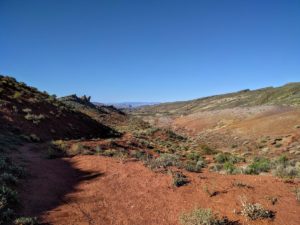
One of the main reasons I wanted to hike in this area at this time of year was actually to see a Mojave desert tortoise, so seeing two was quite a treat. The Mojave desert tortoise was listed on the Federal Threatened and Endangered Species List as a threatened species in 1990. After the listing, Washington County prepared a Habitat Conservation Plan, anticipating that it would provide a comprehensive approach to preserving and protecting habitat for the desert tortoise while allowing controlled growth and development in portions of desert tortoise habitat that were less essential to the species. The plan proposed the establishment of a nearly 62,000-acre wildlife reserve, the Red Cliffs Desert Reserve. Within this area, uses are carefully controlled, and all management actions are to place the desert tortoise as the highest priority. Basically, the Habitat Conservation Plan and Red Cliffs Desert Reserve allowed for development of desert tortoise habitat in designated areas, called take areas, outside of the reserve. Of course, when reserve staff removed tortoises from these take areas, the animals needed to be relocated. In the past 20 years, tortoises have been relocated in many different areas throughout the reserve to preserve the gene pool and make sure there are viable populations behind different firebreaks in case of a catastrophic wildfire.
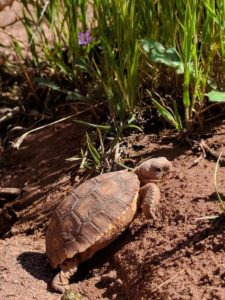
In the original draft of the plan, this area — known as Babylon or Zone 4 — was to be evaluated as a possible translocation site. As healthy tortoises were being removed from take areas outside the reserve, a population was translocated to Babylon to see if they would be able to survive a translocation effort. Many said they did not think it would be possible, but if you make your way around the area in the tortoises’ active season, you can see that the experiment was a very successful one. Over 450 tortoises have been translocated to the Babylon area since 1999. On this hike alone, I spotted an adult male and a brand new hatchling. Who knows how many others I passed by and didn’t even see? The ability to return to the area yearly and find both large tortoises of breeding age as well as these new young ones is exciting!
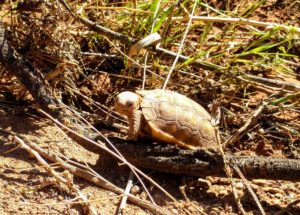
A number of tortoises are spotted on the main road through Babylon, and tortoise hatchlings are only the size of a silver dollar, often getting mistaken for rocks. Keep your eye out for one of these amazing creatures as well as many different species of birds, snakes, and lizards, including Gila monsters. The plant activity is great as well, with blooming Indian paintbrush and desert sage adding a pop of color to your hike. The area comes alive with activity in the spring, and if you go slowly and pay attention to your surroundings, you just might spot some amazing wildlife! As always, please do not touch the tortoises and other sensitive species. Tortoises have a very special way to store water, but a sniff from an unleashed dog or a human getting too close can cause it to void its bladder out of fright. In the hot, dry summer, a tortoise that voids its bladder and cannot find more water can easily dehydrate and die.

If you’d like to learn more about the reserve or animals you may encounter in the area, stop by the Red Cliffs Desert Reserve Visitor Center at 10 N 100 E in downtown St. George. The free center houses live desert tortoises, a Gila monster, a tarantula, a scorpion, and a king snake. Open Mondays through Fridays from 8 a.m. to 5 p.m., it is a great place to bring the family for a visit and even buy a trail map!

